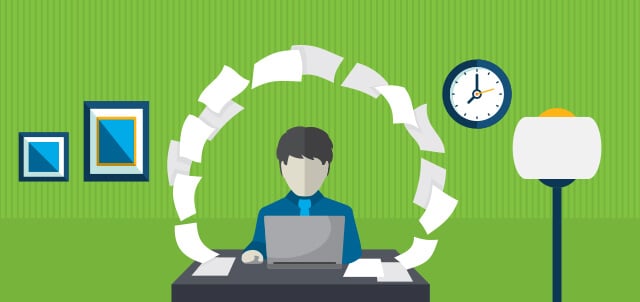As a small business owner or office manager, you’re likely already spread thin. Doing payroll is yet another task on your list of responsibilities.
If your payroll is kept in-house, you’re probably familiar with the human errors that can occur when you’re doing things manually. Input errors, tax compliance issues and slow paycheck delivery might come to mind.
Even if you have payroll software, your system might create more of an obstacle course for payroll input than a tried-and-true sidekick that helps you avoid error.
Here are three major ways good payroll software should help you avoid human error.
1. Alerts for payroll discrepancies
Let’s say you’re entering payroll for a salesman’s commission and you input $20,000 rather than $200. Without a notification system built-in to your payroll software, your system will generate a check based on this information.
Suddenly, an input error means you’ve paid your employee $19,800 more than you intended. This can be an administrative mess to reverse and can leave your employee frustrated as you figure out your next move.
A good payroll system will provide alerts for any payments that are out of the ordinary. It notifies you to look at discrepancies from the previous payroll.
For example, if you input 400 hours for a full-time employee’s work week instead of40 hours, you’d receive a popup notifying you that there is an excessive increase in pay since the last payroll.
You can then quickly correct the problem – and voilà, crisis averted.
2. Ability to calculate changing taxes in multiple states and localities
As we’ve all become interconnected through technology and the Internet, it’s now easier than ever for small businesses to operate beyond state borders. A company with as few as ten employees can easily have sales representatives in four different states. With email, video conferencing, smartphones and other technology, the team can stay connected almost effortlessly.
While day-to-day operations might be easy breezy, filing payroll taxes for employees in separate states can be quite a different story. Different states means different state tax authorities and requirements that dictate how much and how often state taxes need to be paid.
While some states have moved to electronic filing, others are still behind the times requiring paper filing, which complicates matters even further. And to add to the muddled mix, some employees may be subject to local tax authorities that have additional tax requirements.
At times, local tax rates can be painfully specific and vary by zip code. Simply having a location on one side of the train tracks, for example, might make employees subject to a .015% higher tax rate.
If you’re trying to keep up with tax laws in-house, you know how cumbersome it can be to stay in compliance with federal, state and local requirements, especially if you have multiple locations in different states.
If you currently have payroll software, you might be wondering if all the built-in tax rates reflect the latest changes in your operating areas.
Better payroll software will have specialists that closely monitor federal, state and local payroll laws and regulations and deploy updates when payroll requirements change. This helps remove the opportunities for human error and alleviates the processing headaches associated with doing payroll taxes in different locations throughout the country.
3. Streamlining payroll delivery
When you’re handling payroll in-house, you likely also have the burden of the paper check.
The burden of the paper check lies in the fact that it’s a tangible object that requires physical delivery. With multiple locations, a disciplined delivery methodology must be created to get employees their check on payday, each pay period.
Whether it’s sent by mail or another method, this leaves your paycheck delivery system vulnerable to the whims of human error. For example, let’s say your mail carrier is behind schedule and one of your batches of paychecks is received two days later than normal.
Imagine the complications that can ensue from late paychecks.
Your company’s administrative assistant can’t pay her daycare bill and has to stay home with her child during your big open house event. Your cashier doesn’t have the cash to fill up his tank of gas to get work on the busiest shopping day of the year. Your Web designer refuses to make an important update on your site until she receives her check.
There are so many things that can go wrong when you fail to pay your employees on time.
Even with payroll software that allows for direct deposit, you could still have trouble getting employees their pay on time, especially if your system is lacking the right schedule notifications.
Payroll software with direct deposit requires you to input your payroll in advance of your payday to allow for bank processing time. If you don’t post and approve your payroll on time, you might have to resort to paper checks to get your employees their funds on schedule. This creates the headache of explaining to employees why they suddenly have to deposit a check when they’ve been receiving direct deposit for years.
Scheduled notifications are built into the best payroll software to remind you of looming deadlines. With email reminders, plus pop up notifications, you aren’t as likely to miss the target window of time to get funds distributed properly through direct deposit.
Get payroll software that helps you avoid human error
Insperity Payroll Services offers payroll software, plus payroll support. Built-in features allow you to avoid payroll discrepancies, calculate taxes with ease, and streamline payroll delivery.
Additionally, you’ll get double the assurance each time you process your payroll – accuracy assurance consultants will review your payroll to make sure everything is correct and complete before it’s processed.
If you’re seeking better payroll software, Insperity Payroll Services has what you need.


